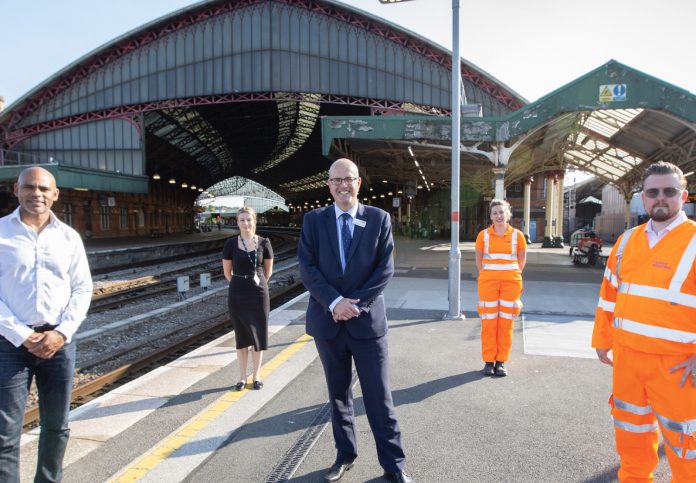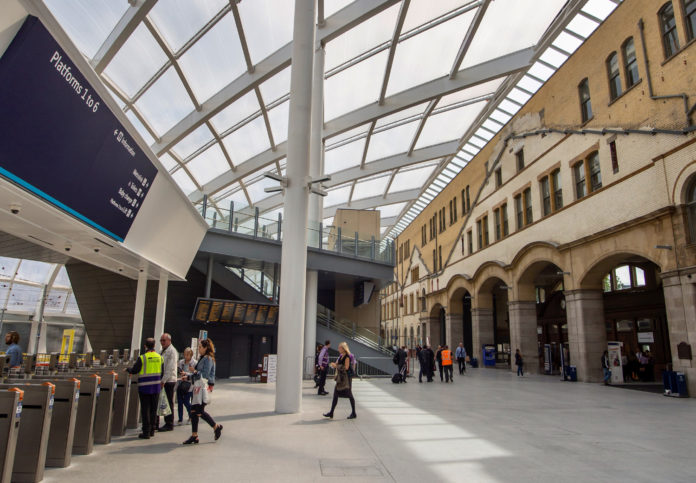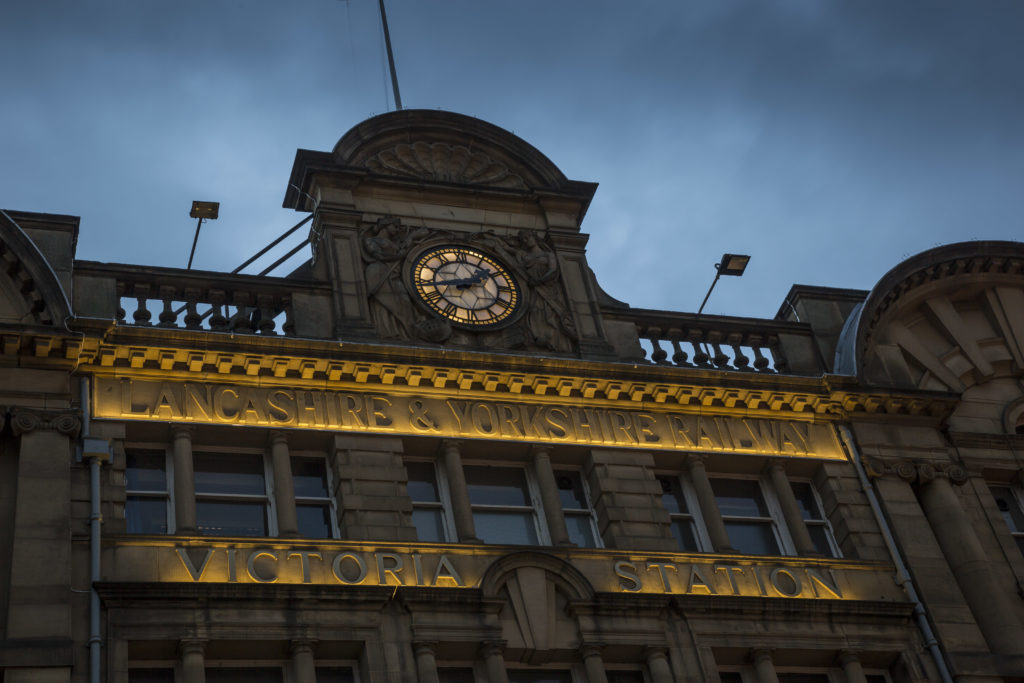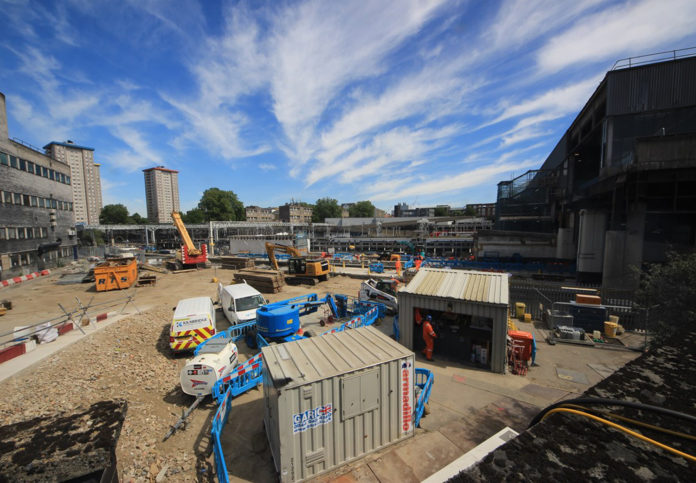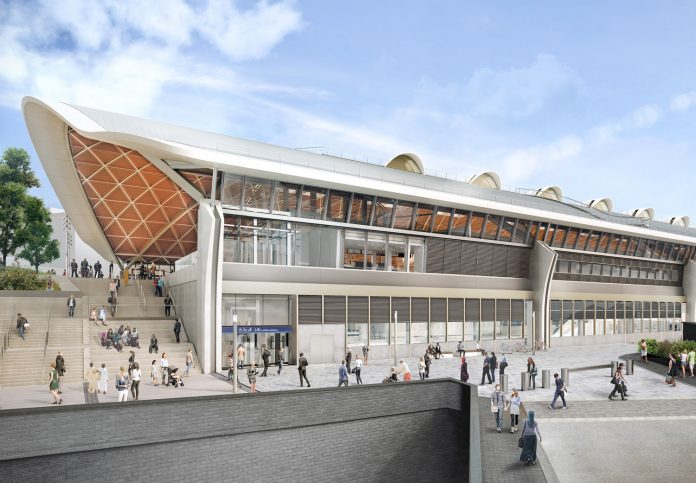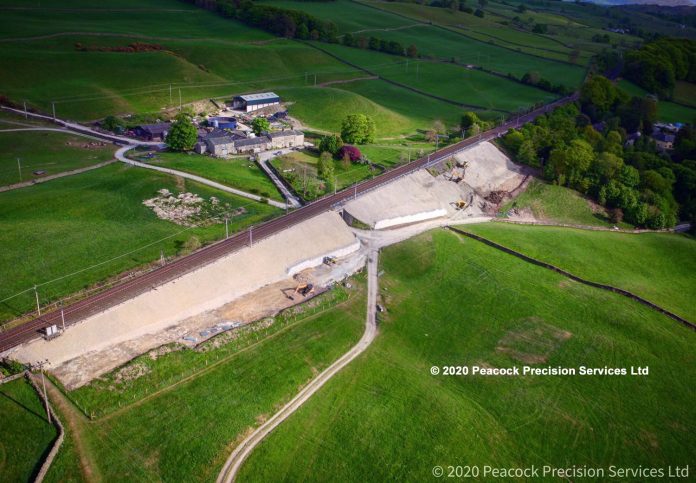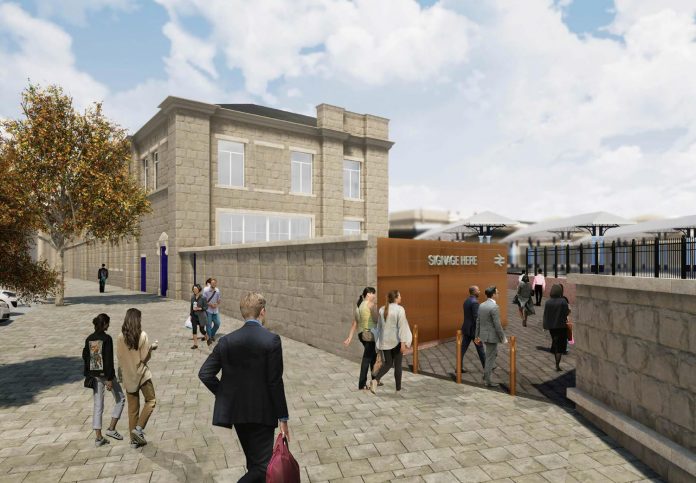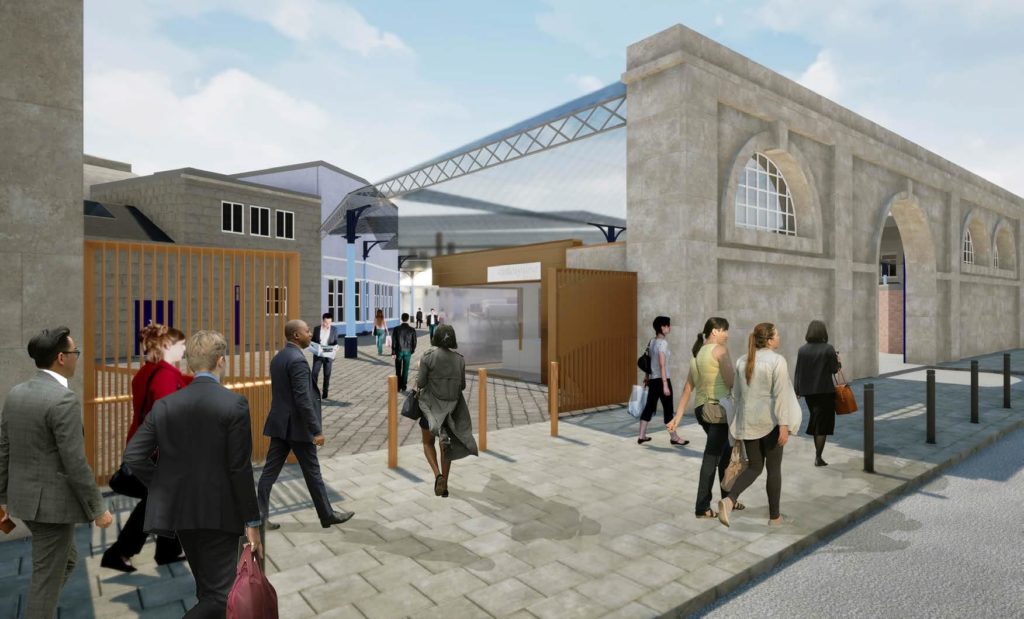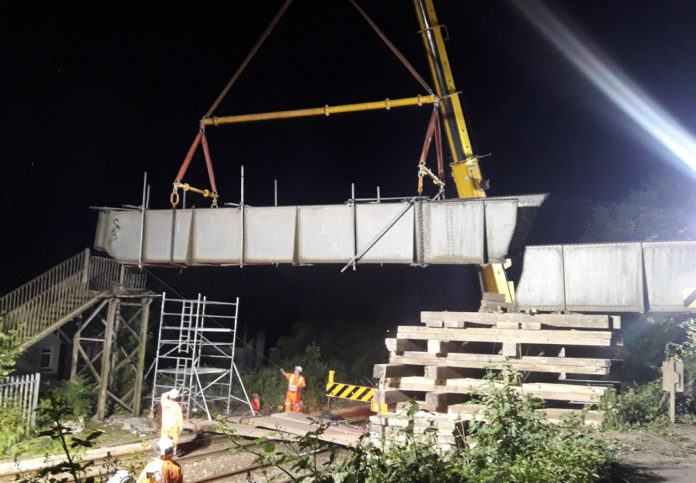Andrew Haines considers a post-Covid railway
Network Rail chief executive Andrew Haines holds round-table briefings with the editors of the rail industry’s press, including Rail Engineer and sister publication RailStaff, every six months or so.
On 8 June, thanks to the Covid-19 lockdown, no table was in evidence and instead everyone logged into Zoom. Andrew Haines spoke for about 15 minutes, then opened the sessions up to questions from those attending. It was a far-reaching session, and gave Andrew the chance to explain how he felt the four phases of Covid-19’s had affected and would still have an impact on the rail industry. In doing so, he used the four ‘R’ words.
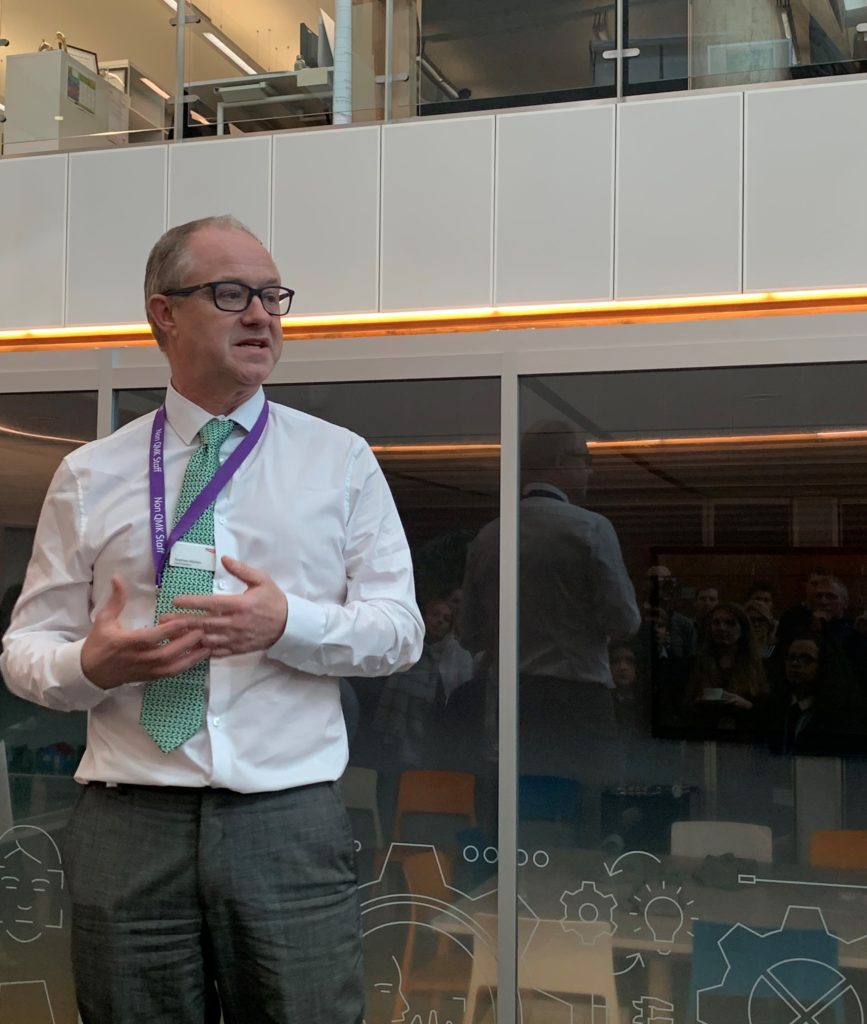
Respond
Andrew Haines considers that the railways have responded very well to the Covid-19 crisis and is immensely proud of what his colleagues have done. The railway was given a “peculiar brief” – to run a sensible level of service for key workers, regardless of how many people were using them. He considered the reduction in train services was the industry’s biggest ever short-term train planning exercise, which went remarkably smoothly.
The industry has also done a good job of maintaining capital investment, as Network Rail and its supply chain have worked in an agile manner to respond to challenges of social distancing. As a result, in April and May, about £1 billion was spent on renewal and enhancements. During this time, rapid payments were made to suppliers. Few, if any, other parts of the economy have managed to sustain that level of economic activity.
There have also been some fantastic examples of rail industry colleagues helping the broader community. Network Rail helped build the Manchester Nightingale hospital and was involved in the provision of PPE for the NHS, for example, having arranged for a lemonade bottle manufacturer near Stockport to manufacture temporary visors.
Rebuild
What Andrew considered to be a “big ask” is the ramping up of services, to around 85 per cent of previous levels, on Monday 6 July. Whilst Network Rail was very pleased with the decision to mandate face coverings on public transport in England from 15 June, he was concerned that, if the requirement is to maximise trains, passengers and social distancing, a “very chaotic situation” will be the result.
Although the industry explained the consequences of differing levels of social distancing, government has yet to decide whether to relax this. It considers that such a decision must be based on scientific evidence.
Yet the government is faced with conflicting scientific advice on the effectiveness of face coverings, despite strong evidence that their use could safely allow a reduced social distance, as explained in our feature about face coverings elsewhere in this issue.
Revive
It clearly will be a long time before there is a return to the previous levels of travel. Hence Andrew feels that the revival of rail travel is fundamental. This means that the industry shouldn’t take passengers and freight users for granted and that a reliable timetable with excellent train performance will be essential.
He also considers that more space will be needed for cyclists and that a sustained marketing campaign, not seen since the days of British Rail, will be required.
The Covid-19 crisis will almost certainly drive fare reform, as it has accelerated the trend of flexible and home working. As revenue risk is no longer with the train operating companies, it seems likely that the Department for Transport will have to lead fare reform – and do so quickly.
The emergency measures arrangements that replaced franchising need to be replaced this September with something more sustainable. The challenge will be to devise contracts that provide an effective response to a variable situation at a time of reduced revenue.
Andrew also felt that there is still an appetite for rail reform, a topic in which Keith Williams is still actively involved. The government is considering how to deal with his recommendations now that franchising has been largely parked. As it is unlikely that there will not be much time for parliamentary legislation to create a new body, the issue is how much can be done through a combination of direct DfT control, industry collaboration and collective leadership.
Renewal
Despite the enormous financial pressures, Andrew advised that “we are hearing encouraging messages from government about the desire for further infrastructure spend” and that “we are not yet seeing a threatened cull of capital or revenue expenditure.” Yet his message to the supply chain is that “you have got to work with us to drive efficiencies” as doing this is “going to make or break our ability to access additional government funding in the next few years”.
For its part, Network Rail must improve the way that GRIP (Governance for Railway Investment Projects) is applied. He advised that the company is looking very radically at this to reduce timescales and costs. Yet, many consider there’s nothing wrong with GRIP and that the problem is it being applied in a cumbersome way with endless months spent on optioneering and spurious risk assessments.
The speed at which work was mobilised for the Kilsby tunnel blockade and derailment repairs on the Gospel Oak to Barking line gave Andrew hope that the GRIP process can be reformed. He thought that the key lessons from these examples is to reinstate the power of the professional engineer, railway operator and railway manager. Essentially, he felt that this was about “repositioning the position of the professionals in the industry to take those key decisions”.

Electrification
Having tackled the four Rs, Andrew moved on to other topics, largely as a response to questions from the ‘virtual floor’.
He confirmed that Network Rail will be presenting its Traction Decarbonisation Network Strategy to the DfT in July in accordance with the original timescale. The hope is that this will result in an extensive electrification programme. The sense he is getting is that Ministers are taking it very seriously but are not yet quite ready to go public.
Network Rail has always advised that a continuous programme is required. If government require this, Network Rail could provide the supply chain with the continuity of demand that would facilitate investment in skills and technology to get a better price.
He was absolutely determined to demonstrate that Network Rail has ‘fit for purpose’ electrification standards. He advised that “what we do know is that we can do more electrification on the Transpennine route upgrade more cheaply, because of the work that we have done to significantly reduce electrification clearances, which has driven a lot of costs out of structures”.
In the short-term, the Midland main line electrification could be extended. However, there may be a short lead time before electrification can be restarted. Network Rail recognised the importance of keeping experienced teams together and he thought that was why the government is looking to move quickly. He hoped the supply chain recognised this and would not do anything rash in this respect.
Track worker safety
The recent double tragedy of Margam in July, followed by another track fatality at Roade in April, sadly highlighted the importance of improved track safety arrangements.
Andrew advised that investment in a track worker safety task force had been approved two weeks before the Margam fatalities and that its programme had four elements:
- Planning and undertaking maintenance, for which progress has been made with Covid driving risk-based maintenance;
- Technology such as track warning systems, which are not consistently used across the network;
- Signaller workload and the use of line blockages – one challenge is that Covid is limiting access to signalling centres for assessments;
- Culture.
Of these, culture is the most difficult issue to address. Andrew felt that although, in many ways the industry had a positive culture, some behaviours needed to be improved. He also felt that informal relationships mitigated against safety-critical communications.
In this respect he had some challenging, honest and constructive discussions with Trade Union leaders and his own colleagues.
In the hour that he spent talking and answering questions, one thing that came across very strongly was Andrew’s belief that Network Rail is part of the railway as a whole. He is, no doubt, very close to the train operators, both individually and collectively through the Rail Delivery Group. He was quite prepared to answer questions on train operations, whether passengers should wear face masks and how they keep their distance – for example commenting that keeping two metres apart while boarding a busy train would adversely affect both dwell times and adherence to the timetable.
It was a very revealing session.





